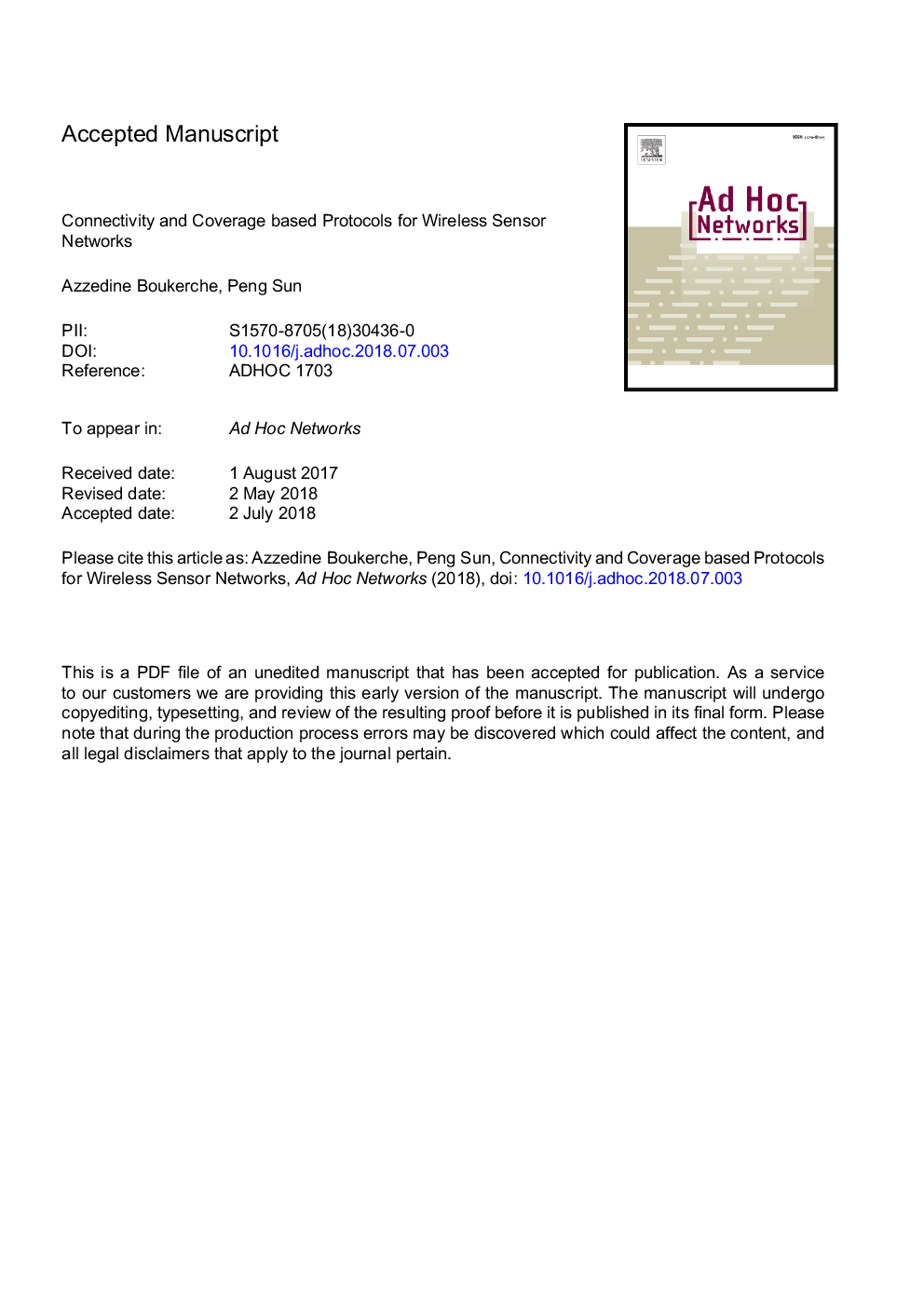| Article ID | Journal | Published Year | Pages | File Type |
|---|---|---|---|---|
| 6878354 | Ad Hoc Networks | 2018 | 52 Pages |
Abstract
A wireless sensor network (WSN) consists of a group of energy-constrained sensor nodes with the ability of both sensing and communication, which can be deployed in a field of interest (FoI) for detecting or monitoring some special events, and then forwarding the aggregated data to the designated data center through sink nodes or gateways. In this case, whether the WSN can keep the FoI under strict surveillance and whether the WSN can gather and forward the desired information are two of the most fundamental problems in wireless sensor networks that need to be solved. Therefore, preserving network connectivity while maximizing coverage by using the limited number of energy constrained nodes is the most critical problem for the deployment of WSNs. In this survey article, we classify and summarize the state-of-the-art algorithms and techniques that address the connectivity-coverage issues in the wireless sensor networks.
Related Topics
Physical Sciences and Engineering
Computer Science
Computer Networks and Communications
Authors
Azzedine Boukerche, Peng Sun,
